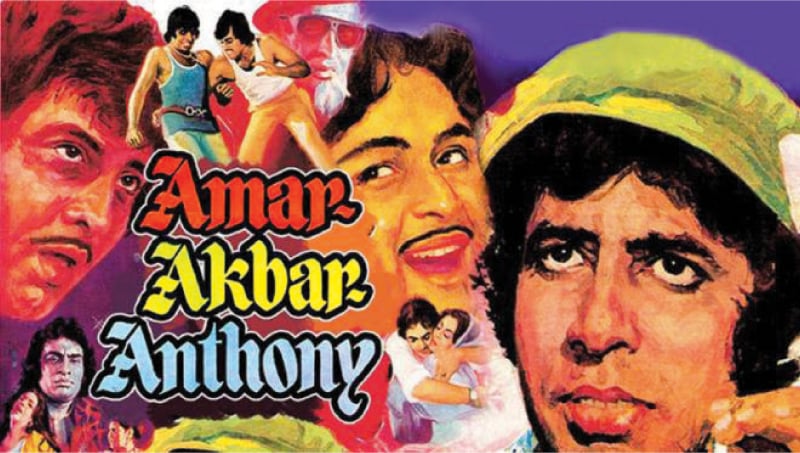Omair Alavi|Published August 26, 2018
A publicity poster for the 1977 hit film Amar Akbar Anthony; as revealed in Diptakirti Chaudhuri’s book, the plot of the film was inspired by a newspaper clipping
India’s film industry, one of the oldest in the world, has a rich history that spans generations. While many cine-goers may be aware of the more common facts, such as which was the first film made in Bombay (now Mumbai), the first Indian talkie, the first colour film or the film that made Amitabh Bachchan a superstar, several other facts remain yet to be unearthed. Diptakirti Chaudhuri’s Bioscope: A Frivolous History of Bollywood in 10 Chapters is a book that delves into the history of Indian films with plenty of intriguing nuggets of information.
But first, a word about Chaudhuri. He has authored five books of which four, including the one under review, are about Bollywood. After Kitnay Aadmi Thay: Completely Useless Bollywood Trivia, he came out with Bollybook: The Big Book of Hindi Movie Trivia. Then came Written by Salim-Javed: The Story of Hindi Cinema’s Greatest Screenwriters. It’s safe to say the man knows his films.
The blurb on the back of Bioscope reads, “Is kahani mein drama hai, emotion hai, tragedy hai…” [This story has drama, emotion, tragedy…] and it couldn’t have been a more apt description. The quirky history of Hindi cinema is tracked through lists about commercial successes, popular star pairings, behind-the-scenes teams of lyricists and music composers, villains, foreign imports, style statements and much more.
A new book about Bollywood is a treasure trove of facts, anecdotes and trivia that movie buffs love to read about
From the book we learn that the story of the 1977 blockbuster Amar Akbar Anthony was inspired by a newspaper clipping; that actress Sadhana wore her hair in a fringe because she wanted to hide her forehead; that the femme fatale Helen was born to a Spanish-Burmese mother and a French father and that Bob Christo, the most popular gora bad guy of the ’80s and ’90s, was an Australian civil engineer who came to India after he saw the actress Parveen Babi on the cover of Time magazine.
It tells us why lyricist Sahir Ludhianvi refused to work with music maestro S.D. Burman and why composer Naushad worked exclusively with poet Shakeel Badayuni. Oddly enough, while Chaudhuri includes the pair of composer/singer Amit Trivedi and lyricist/singer Amitabh Bhattacharya, there is no mention of the powerhouse musical duo Jatin-Lalit. There is, however, an interesting story of music director R.D. Burman jamming with poet Gulzar at a traffic stop while both were in separate cars, with yet another car separating their vehicles.
Chaudhuri’s excursion into the neighbouring territory has a bit of a mixed flavour. On the one hand, the book mentions Pakistan as an “enemy” (Bollywood-wise). On the other, it praises qawwal Ustad Nusrat Fateh Ali Khan and actor Fawad Khan for having made a place in the hearts of Indian audiences. Chaudhuri writes that military police in Pakistan made owners of video rental shops swear on the Holy Quran that they would not stock copies of the 1997 film Border and also says that Indian films were censored before being released on video cassettes. I must point out that neither statement can be considered correct.

Such pettiness aside, Bioscope is a treasure trove of facts, interesting anecdotes and trivia that can be shared with friends. The chapters’ titles show how well the author knows his films — the one on box office collections is called ‘Sabse Bada Rupaiya’ which is also a phrase used in a famous song. The one on expats in Indian films is cheekily called ‘Pardesi, Pardesi’ and the one on biopics is titled ‘Teri Meri Kahani’… these are all puns any Bollywood buff would get. Others might have to Google a bit!
The reviewer writes on film, television and popular culture
Bioscope: A Frivolous
History of Bollywood in
10 Chapters
By Diptakirti Chaudhuri
Hachette, India
ISBN: 978-9351952282
232pp.
Published in Dawn, Books & Authors, August 26th, 2018







